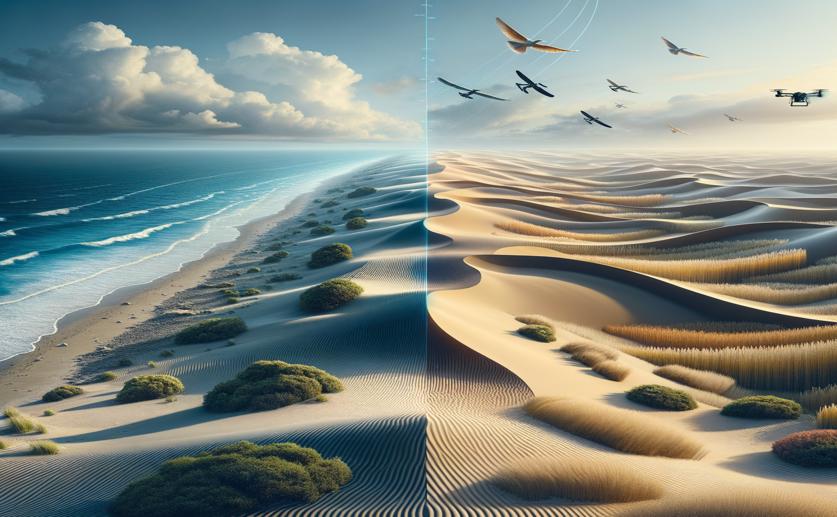
Comparing Sandy Beach and Dune Changes Using Lidar and Drone Technology
Jenn Hoskins
5th June, 2024

Image Source: Natural Science News, 2024
Key Findings
- The study took place in sandy beach and foredune environments, comparing Apple lidar with traditional methods for mapping geomorphic changes
- Apple lidar was slightly less precise than high-precision methods but still provided reliable data for detecting geomorphic changes
- Apple lidar captured finer-scale patterns of erosion and accretion, making it a valuable tool for proactive coastal management
EnvironmentSustainabilityEcology
References
Main Study
1) Comparative analysis of sandy beach and foredune geomorphic change measurements from Apple lidar and small-unoccupied aerial systems.
Published 4th June, 2024
https://doi.org/10.1038/s41598-024-63466-1
Related Studies
2) Citizen science for monitoring seasonal-scale beach erosion and behaviour with aerial drones.
3) Deploying Spatial Data for Coastal Community Resilience: A Review from the Managerial Perspective.
4) Evaluation of the Apple iPhone 12 Pro LiDAR for an Application in Geosciences.



 1st April, 2024 | Greg Howard
1st April, 2024 | Greg Howard